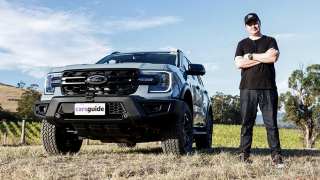
So much to unpack here.
The Endura, a second-gen Edge large SUV from Canada, was perceived as the replacement for the iconic, Australian-made Territory. No pressure there, then.
That assumption followed Ford’s showcasing of a prototype just weeks after announcing its local-manufacturing exodus in mid-2013. This was at a ‘we’re here for the long run with exciting product’ shindig in Sydney.
Five-plus years later in late 2018, Endura finally landed with BMW pricing, a lack of third-row seating, a puny four-pot diesel and no petrol alternative. Everything the best-selling Territory wasn’t, in other words.
Even in 2016, after 12 successful years, the Territory still found around 750 buyers – against the newcomer’s sub-150 average – every month.
Imports ended by 2020. If ever a car lived less up to its name, Endura was it.






















Comments